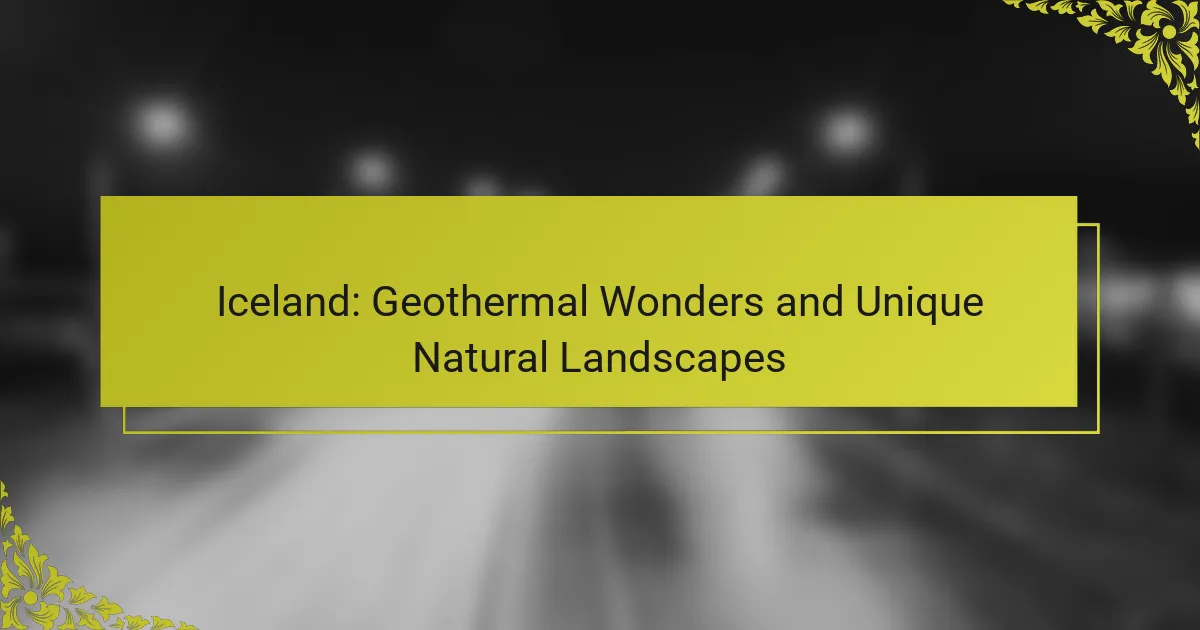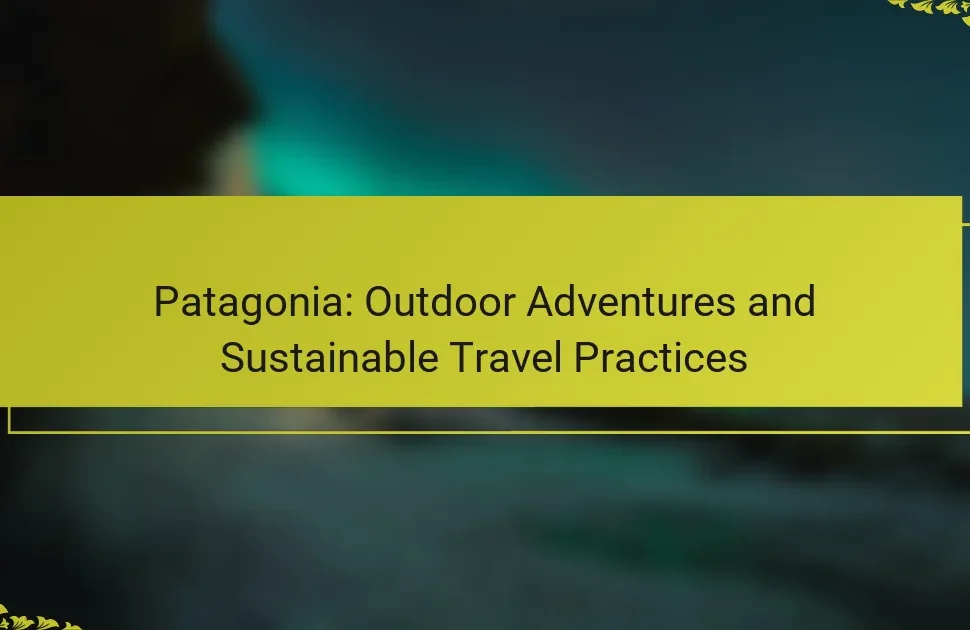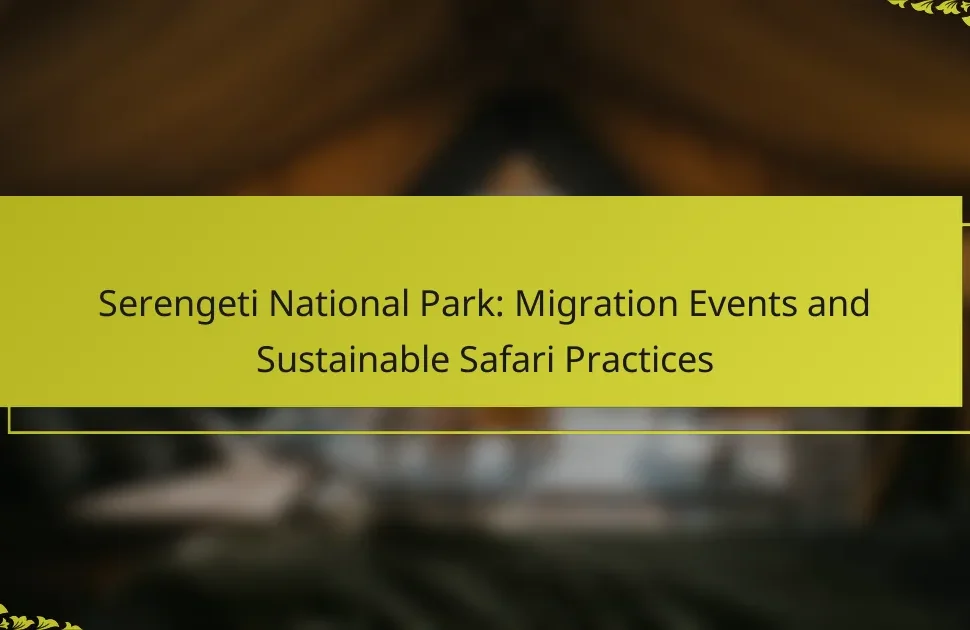Iceland captivates visitors with its geothermal wonders and striking natural landscapes. Explore iconic sites like the Strokkur geyser and the Blue Lagoon. Discover how geothermal energy powers the nation sustainably. Experience unique geological phenomena, including volcanic craters and the Silfra fissure.
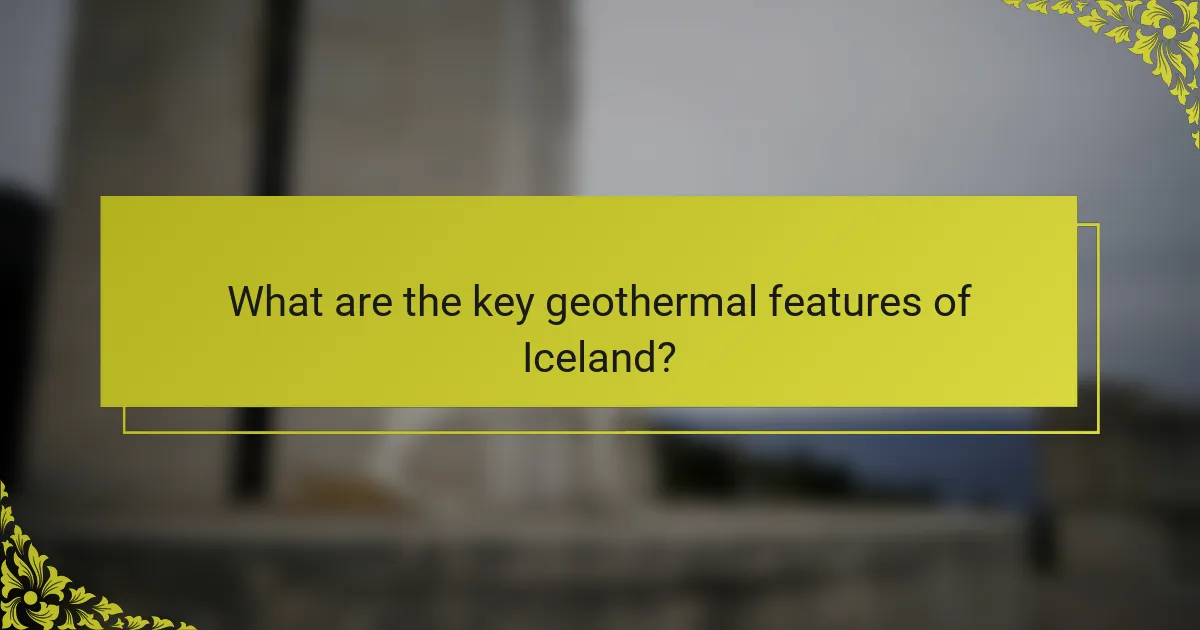
What are the key geothermal features of Iceland?
Iceland is renowned for its geothermal features, including geysers, hot springs, and volcanic landscapes. Key geothermal wonders include the Strokkur geyser, which erupts every few minutes, and the Blue Lagoon, a famous geothermal spa. The country has over 800 hot springs, with unique attributes like mineral-rich waters. Additionally, the geothermal energy harnessed in Iceland provides around 85% of the nation’s heating needs, showcasing its sustainable energy practices. The diverse geothermal areas, such as Haukadalur and Lake Myvatn, offer breathtaking landscapes and unique ecosystems, making Iceland a hotspot for geothermal exploration.
How do geothermal springs contribute to Iceland’s landscape?
Geothermal springs significantly shape Iceland’s landscape by creating unique geothermal features and influencing local ecosystems. These springs contribute to the formation of hot springs, mud pots, and fumaroles, which enhance the country’s natural beauty. The heat from geothermal activity alters the surrounding geology, leading to colorful mineral deposits and vibrant vegetation. Additionally, geothermal energy plays a crucial role in sustaining life in otherwise harsh environments, demonstrating the interconnectedness of geothermal activity and Iceland’s diverse landscapes.
Which geothermal areas are most popular among tourists?
Iceland’s most popular geothermal areas among tourists include the Blue Lagoon, Geysir Geothermal Area, and Haukadalur Valley. These sites offer unique landscapes and various geothermal activities.
The Blue Lagoon is renowned for its mineral-rich waters and luxurious spa experiences. Geysir Geothermal Area features the famous Strokkur geyser, which erupts every few minutes. Haukadalur Valley is home to numerous hot springs and mud pots, providing visitors with stunning natural beauty.
Tourists are drawn to these geothermal wonders for relaxation, adventure, and the opportunity to connect with Iceland’s unique geology. Each area offers distinct experiences, making them essential stops for anyone exploring Iceland’s natural landscapes.
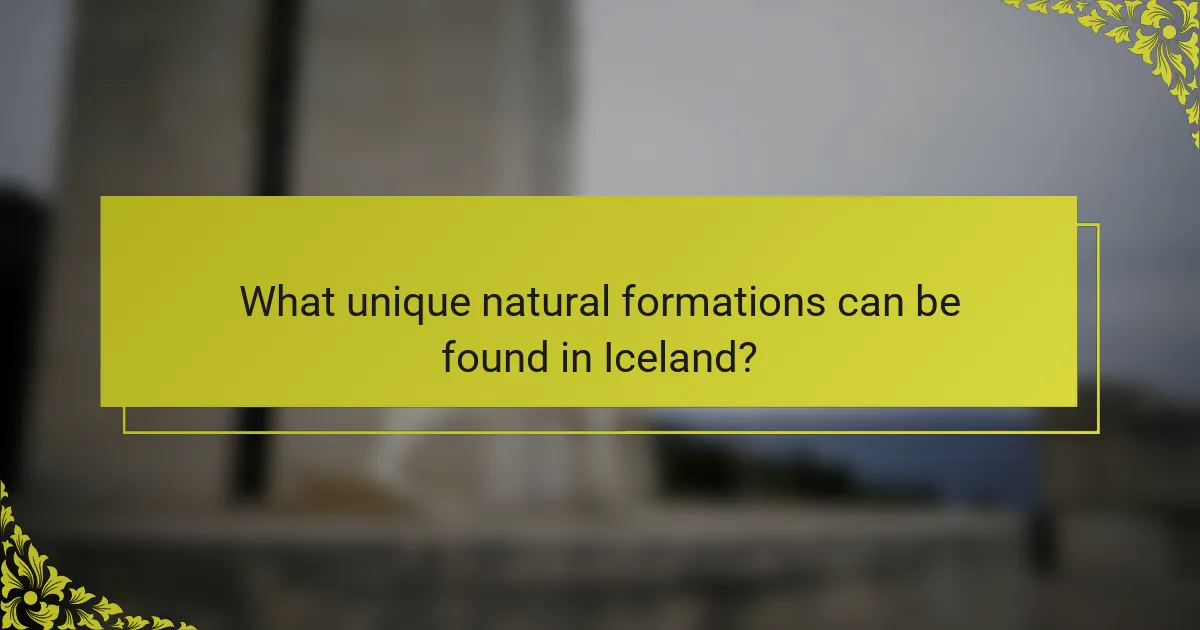
What unique natural formations can be found in Iceland?
Iceland is home to unique natural formations like geysers, lava fields, and glaciers. The Strokkur geyser erupts every few minutes, showcasing geothermal activity. The lava fields, such as those in Þingvellir National Park, display striking volcanic landscapes. Glaciers like Vatnajökull, one of the largest in Europe, cover vast areas and create stunning ice formations. Additionally, the Blue Lagoon offers a rare geothermal spa experience, combining mineral-rich waters with a breathtaking landscape.
How do glaciers and volcanoes shape Iceland’s terrain?
Glaciers and volcanoes significantly shape Iceland’s terrain through erosion and volcanic activity. Glaciers carve valleys and fjords, while volcanic eruptions create new landforms like craters and lava fields. These processes result in a diverse landscape, featuring dramatic contrasts between ice and fire. The interplay of these elements contributes to Iceland’s unique geological features, such as the Vatnajökull glacier and the active volcanoes in the Reykjanes Peninsula.
What role do lava fields play in the ecosystem?
Lava fields play a crucial role in Iceland’s ecosystem by creating unique habitats for various species. These landscapes contribute to soil formation, influencing vegetation growth and biodiversity. The high mineral content in lava fields supports specialized plants, which in turn provide food and shelter for animals. Additionally, lava fields help regulate local climate conditions by affecting water drainage and temperature. As a result, these geological formations are essential for maintaining ecological balance in Iceland’s diverse environments.
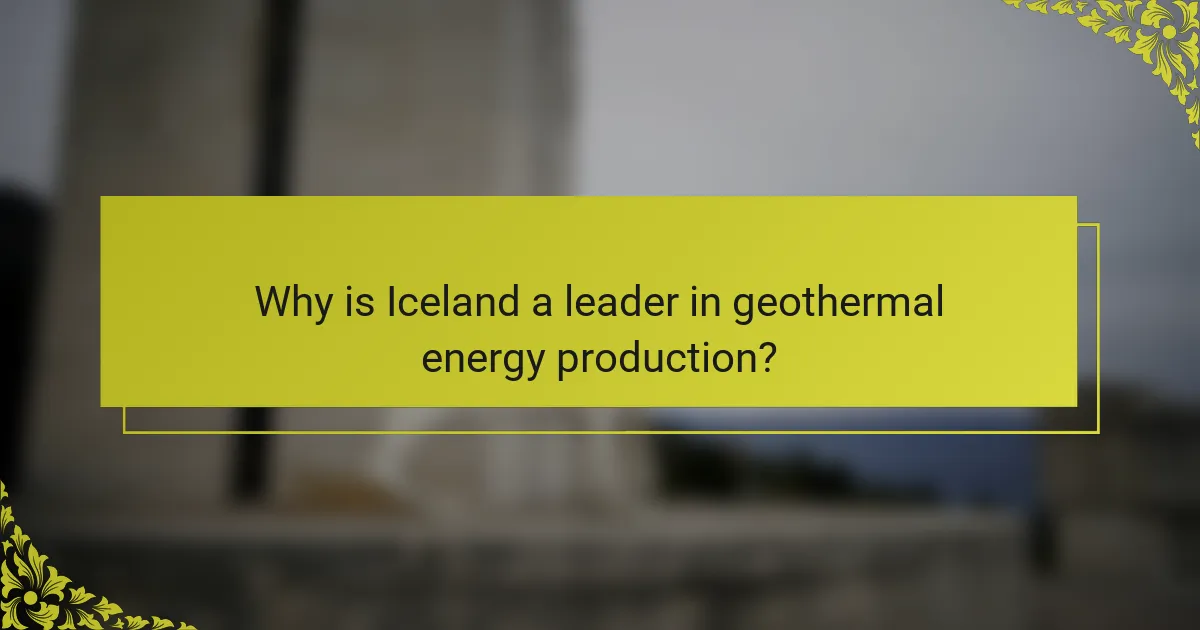
Why is Iceland a leader in geothermal energy production?
Iceland leads in geothermal energy production due to its unique geological features and extensive investment in renewable technologies. The country harnesses geothermal energy from volcanic activity, providing approximately 90% of its heating and 25% of its electricity. Iceland’s strategic use of geothermal resources contributes to its sustainability goals and energy independence. The combination of natural hot springs and innovative engineering makes Iceland a global pioneer in this field.
How is geothermal energy harnessed for residential use?
Geothermal energy is harnessed for residential use primarily through ground-source heat pumps and district heating systems. Ground-source heat pumps extract heat from the earth to provide heating and cooling in homes. District heating systems distribute hot water from geothermal sources to multiple residences.
Iceland’s unique geological features allow for efficient geothermal energy extraction, significantly reducing reliance on fossil fuels. Approximately 90% of Icelandic homes are heated with geothermal energy, showcasing its effectiveness. The country’s commitment to renewable energy has positioned it as a leader in sustainable practices.
What are the environmental benefits of geothermal energy?
Geothermal energy offers significant environmental benefits, particularly in Iceland. It reduces greenhouse gas emissions by providing a clean energy source. Additionally, geothermal energy minimizes reliance on fossil fuels, promoting sustainability. The use of geothermal resources helps preserve natural landscapes and ecosystems, supporting biodiversity. Furthermore, geothermal systems require less land compared to other renewable energy sources, thus conserving space for natural habitats.
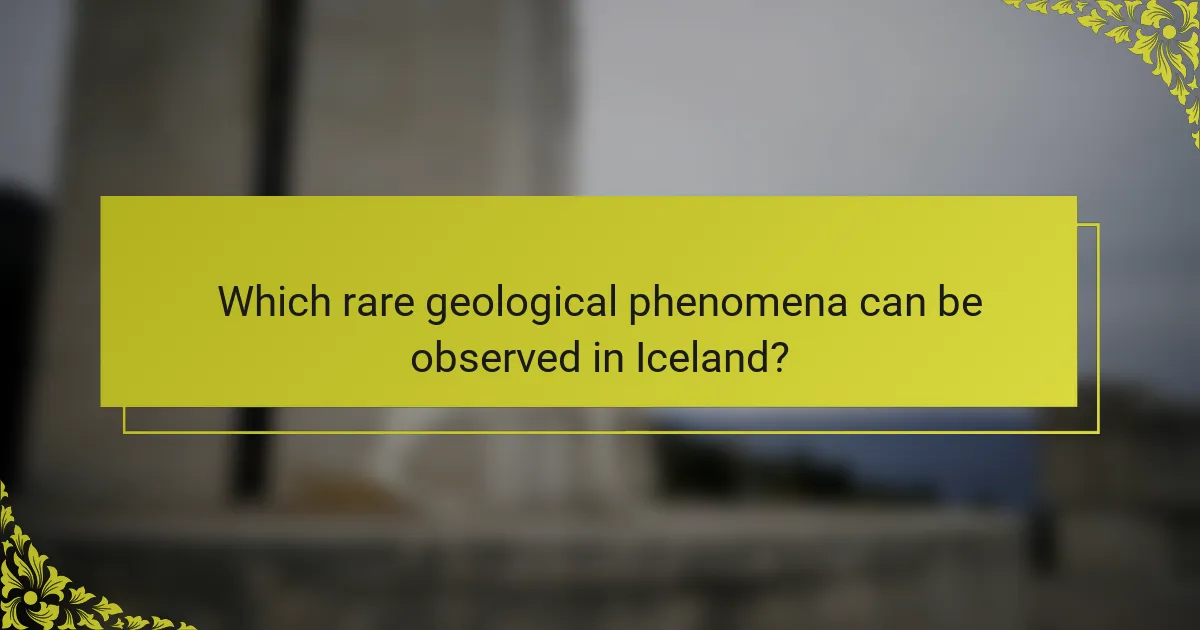
Which rare geological phenomena can be observed in Iceland?
Iceland offers rare geological phenomena, including geysers, volcanic craters, and unique lava formations. These features result from the island’s position on the Mid-Atlantic Ridge, where tectonic activity shapes the landscape.
One notable phenomenon is the Strokkur geyser, which erupts every few minutes, reaching heights of up to 30 meters. Additionally, the Thrihnukagigur volcano allows visitors to descend into its magma chamber, providing a unique perspective on volcanic activity.
The island is also home to the Silfra fissure, where divers can explore rift waters between the North American and Eurasian tectonic plates. These geological wonders highlight Iceland’s dynamic and ever-changing environment.
What are the characteristics of geysers unique to Iceland?
Iceland’s geysers are characterized by their high geothermal activity, unique eruption patterns, and mineral-rich waters. These geysers, such as Strokkur and Geysir, erupt at regular intervals, with Strokkur spouting water every few minutes. The mineral content, including silica and sulfur, gives the water distinct colors and contributes to the surrounding landscape’s beauty. Additionally, Iceland’s location on the Mid-Atlantic Ridge enhances its geothermal features, making these geysers a rare natural phenomenon.
How do the Northern Lights interact with Iceland’s natural landscapes?
The Northern Lights enhance Iceland’s natural landscapes by creating stunning visual contrasts against geothermal features. This phenomenon occurs when charged particles from the sun collide with the Earth’s atmosphere, producing vibrant colors that illuminate the night sky. The interplay between the auroras and Iceland’s geothermal wonders, such as geysers and hot springs, offers a unique experience for visitors.
The dark winter nights provide an ideal backdrop for viewing the Northern Lights, making geothermal areas popular spots for tourists. The geothermal landscapes, characterized by volcanic activity and rich mineral deposits, often reflect the colors of the auroras, creating breathtaking scenery. This interaction showcases the beauty of Iceland’s natural environment and attracts photographers and nature enthusiasts alike.
Furthermore, the unique attributes of Iceland’s landscapes, such as its rugged terrain and minimal light pollution, enhance the visibility and impact of the Northern Lights. The combination of geothermal activity and auroral displays creates a rare and captivating experience, highlighting Iceland’s status as a premier destination for witnessing this natural wonder.
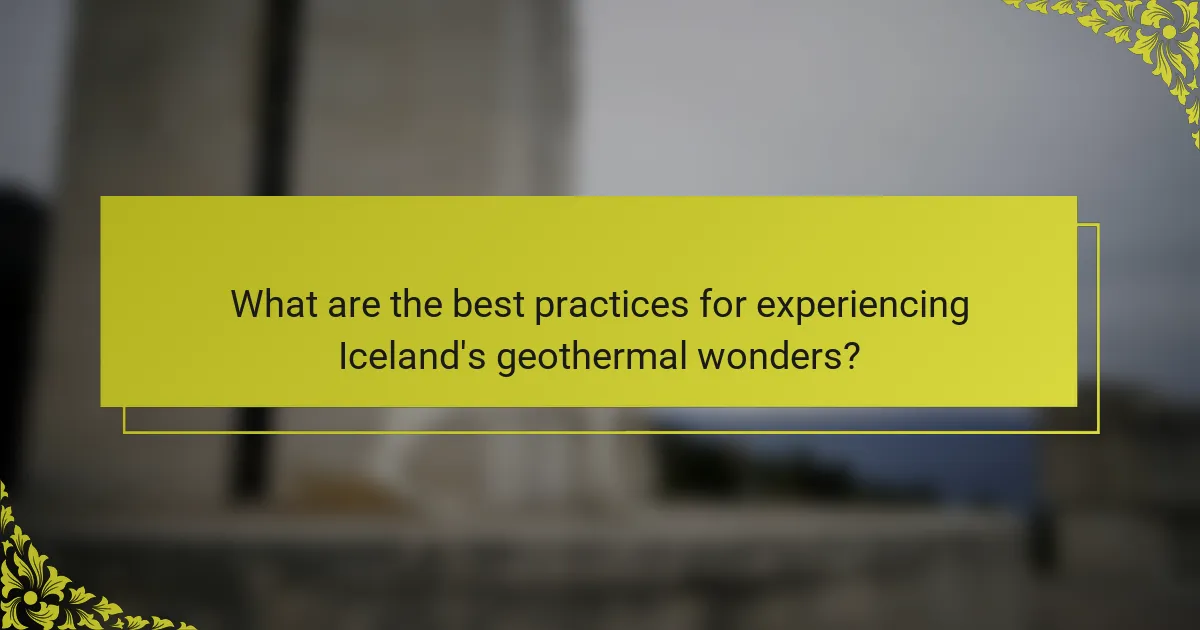
What are the best practices for experiencing Iceland’s geothermal wonders?
To experience Iceland’s geothermal wonders effectively, prioritize visiting popular sites like the Blue Lagoon, Geysir, and Lake Myvatn. Plan visits during off-peak seasons for a more serene experience. Engage in guided tours to gain insights into geothermal processes and local geology. Dress in layers to adapt to varying temperatures near hot springs. Respect natural habitats by staying on marked paths.
How to plan a sustainable tour of geothermal sites?
To plan a sustainable tour of geothermal sites in Iceland, prioritize eco-friendly practices and local engagement. Start by choosing certified sustainable tour operators who emphasize minimal environmental impact.
1. Research geothermal sites that promote conservation, like the Blue Lagoon and Geysir Geothermal Area.
2. Opt for guided tours that use electric vehicles to reduce carbon emissions.
3. Respect nature by sticking to marked paths and following local guidelines.
4. Support local businesses by purchasing handmade crafts and dining at local eateries.
By focusing on these practices, you can enjoy Iceland’s geothermal wonders while preserving its unique natural landscapes.
What common mistakes should be avoided when visiting Iceland’s natural landscapes?
To fully enjoy Iceland’s natural landscapes, avoid these common mistakes. First, do not underestimate the weather; conditions can change rapidly. Second, respect the fragile ecosystems and stick to marked paths. Third, avoid overpacking; bring only essentials for comfort and mobility. Lastly, don’t miss out on local insights; engage with guides for enhanced experiences.
